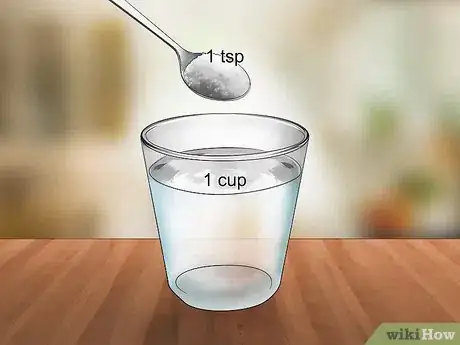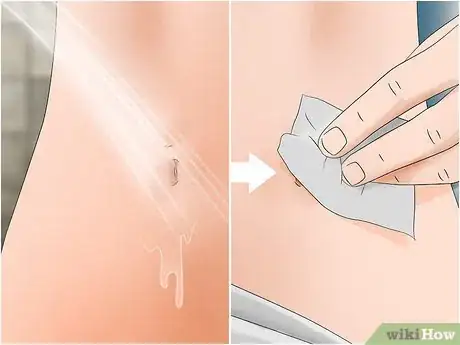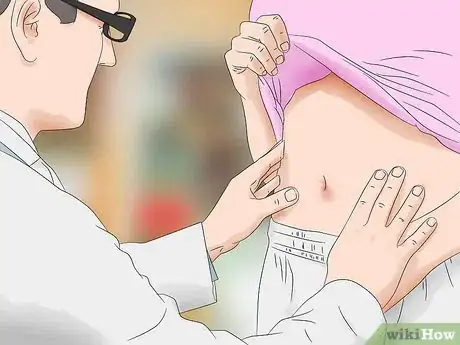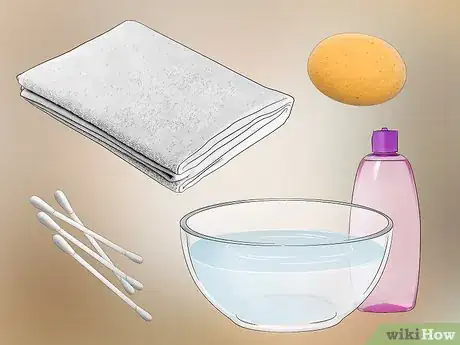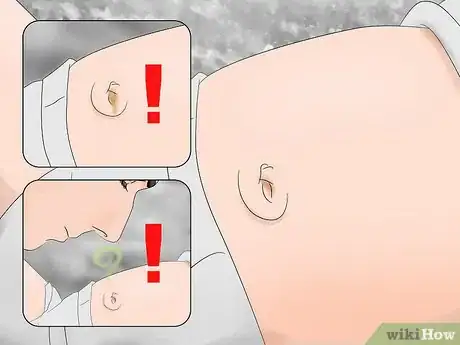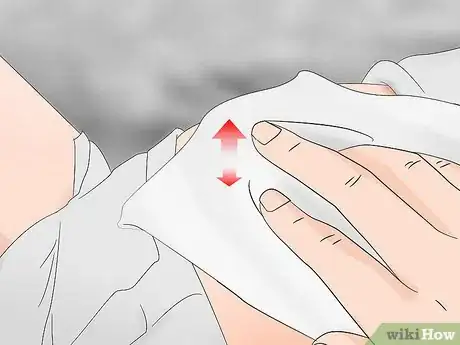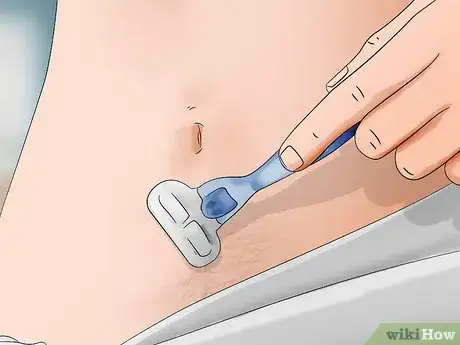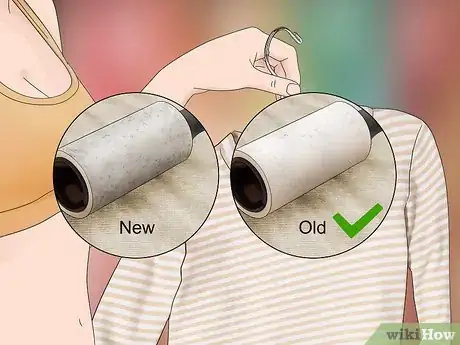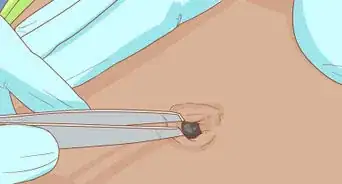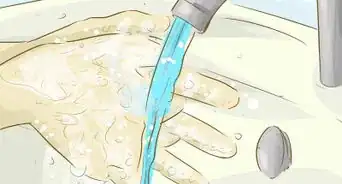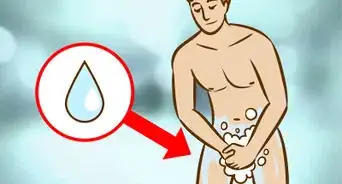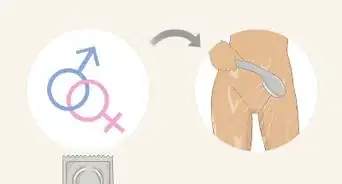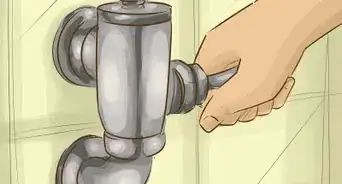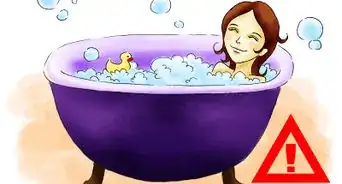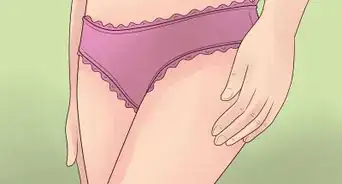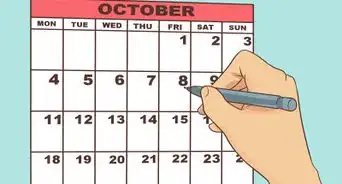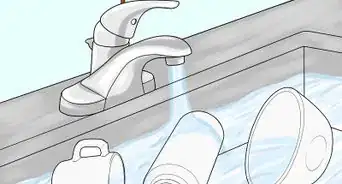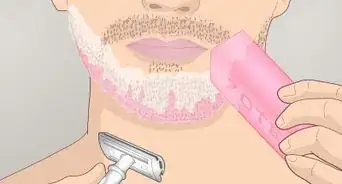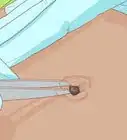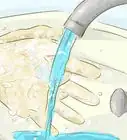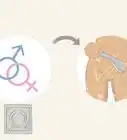This article was co-authored by Indy Chabra, MD, PhD. Dr. Indy Chabra is a Board Certified Dermatologist and a Board Certified Mohs Micrographic Surgeon. He is the Founding Member of DMC Dermatology & Mohs based in Tucson, Arizona. With over 15 years of experience, he provides medical, surgical, and cosmetic dermatology care for adult and pediatric patients. Dr. Chabra earned a BS in Chemistry and Biological Sciences and an AB in Economics from Stanford University. He also received his MD and PhD in Microbiology and Genetics from Stony Brook University. He completed his Dermatology residency at the University of Pittsburgh Medical Center (UPMC), Pittsburgh. While at UPMC, Dr. Chabra received extensive training in complex Medical Dermatology, hair and nail conditions, Pediatric Dermatology, Cosmetic Dermatology, and Mohs Skin Cancer Surgery. Dr. Chabra is a Fellow of the American Society for Mohs Surgery, a Fellow of the American Academy of Dermatology, and a Fellow of the American Society for Dermatologic Surgery. Dr. Chabra also provides in-patient Dermatology consults at Tucson Medical Center.
This article has been viewed 117,196 times.
The belly button is one of the body parts we always forget to clean. If you don't clean your belly button regularly, lint can get stuck inside. You can clean your belly button after a shower with a simple salt solution. If you have an infant whose umbilical cord is still intact, you will have to clean their belly button regularly. In the future, take steps to keep your belly button clean and lint free on a regular basis.
Steps
Cleaning Your Belly Button
-
1Take a shower. Before cleaning your belly button, take a quick shower. This will help loosen up any dirt or lint in your belly button. You don't need to do anything special in the shower. Just shower as you normally would using regular soap and water.[1]
-
2Make a salt solution. It's best to clean out your belly button using a salt solution. Mix a teaspoon of table salt into a cup of water. Mix the salt in until it dissolves.[2]Advertisement
-
3Massage your belly button with the solution. You can use your fingers or a small rag to clean your belly button. If you use your fingers, wash your hands first. Dip your rag or fingers into the salt solution.[3]
- Gently massage the inside of your belly button. This will loosen up any lint or other dirt and debris. If some pieces of lint are very large, you may have to pull them out of your belly button.
-
4Rinse and dry your belly button when you're done. Do this using plain water. Gently pat dry the area around your belly button dry with a clean rag.
-
5Consult a doctor if you have a belly button infection. Belly button infections can happen due to poor hygiene or a recent piercing. You should see a doctor as soon as you can in the event of an infection. Signs of a belly button infection include:[4]
- Red or itchy skin near the belly button
- Swelling
- A bad smell
- Discharge from the belly button
- Pain or blistering around the belly button
Caring for an Infant's Belly Button
-
1Gather your supplies. You don't want to keep your infant waiting to be cleaned. A baby may become fussy or uncomfortable if cleaning takes too long. When you get ready to clean an infant's belly button, get your supplies ready ahead of time. You will need the following:[5]
- A large towel for your baby to lie on.
- A sponge, cotton swabs, a bowl of warm water, and baby soap.
-
2Wash your hands. Babies are prone to infection. Wash your hands under warm water using soap before you begin the process of cleaning your baby's belly button.[6]
- Wash your hands for about 20 seconds.
- Make sure to dry your hands off using a clean cloth or paper towel.
-
3Check for infection. A belly button infection can be dangerous for an infant. If you notice an infection, your baby will need to see a pediatrician as soon as possible. The following are the signs of a belly button infection in a baby:[7]
- Discharge around the belly button
- A foul smell coming from the umbilical cord
- Tenderness or swelling of the skin
-
4Wash the cord. Dab a piece of cloth in warm water. Gently wipe down the umbilical cord and the surrounding area. Then, wipe down the cord with a mild cleanser.[8]
- You want to keep the cord clean and dry until it falls off naturally. This keeps your baby's belly button free of infection.
- Do not use rubbing alcohol to clean an umbilical cord.
-
5Dry the cord. Leaving the cord wet could result in an infection. Gently pat the cord, and the surrounding area, dry with a clean, absorbent cloth. Make sure the cord and the surrounding skin are dry to the touch.[9]
Preventing Belly Button Lint
-
1Shave the hair around your navel. Your belly button will be less prone to lint if there's less hair around your navel. If you grow hair around your navel, shaving may prevent lint from building up. If belly button lint bothers you, try shaving your navel with a razor and see if you notice a reduction in lint.[10]
-
2Wear older clothes when possible. Lint collects in your belly button because of fibers of fabric, like cotton, coming off your clothes. Older clothing may attract less lint than new clothes because it's already shed those fibers of fabric. When possible, wear old clothes to prevent the accumulation of belly button lint.[11]
- If you don't have anywhere special to go on a given day, throw on an old t-shirt.
-
3Avoid moisturizing your belly button. Do not use lotions or moisturizers in or near your belly button. While these are generally safe to use on other parts of the body, extra moisture near the belly button is dangerous. It can encourage fungal or bacterial infections.[12]
Community Q&A
-
QuestionCould a person dig too far into their innie belly button while cleaning it?
 TamaraTop AnswererNo, you can't "dig too far" into your belly button. However, you must clean the area gently to avoid hurting yourself.
TamaraTop AnswererNo, you can't "dig too far" into your belly button. However, you must clean the area gently to avoid hurting yourself. -
QuestionWhat can I use to clean my belly button? Can I use hydrogen peroxide or rubbing alcohol? My belly button has a bad smell.
 Community AnswerYes, you can use either of those. Take at look at this article for further information on cleaning your belly button.
Community AnswerYes, you can use either of those. Take at look at this article for further information on cleaning your belly button.
References
- ↑ http://share.upmc.com/2015/07/how-to-keep-your-bellybutton-navel-clean-the-right-way/
- ↑ http://share.upmc.com/2015/07/how-to-keep-your-bellybutton-navel-clean-the-right-way/
- ↑ http://share.upmc.com/2015/07/how-to-keep-your-bellybutton-navel-clean-the-right-way/
- ↑ http://share.upmc.com/2015/07/how-to-keep-your-bellybutton-navel-clean-the-right-way/
- ↑ http://www.parents.com/baby/care/newborn/how-to-clean-babys-belly-button/
- ↑ http://www.parents.com/baby/care/newborn/how-to-clean-babys-belly-button/
- ↑ http://www.parents.com/baby/care/newborn/how-to-clean-babys-belly-button/
- ↑ http://www.parents.com/baby/care/newborn/how-to-clean-babys-belly-button/
- ↑ http://www.parents.com/baby/care/newborn/how-to-clean-babys-belly-button/
About This Article
To clean your belly button lint, first mix together a teaspoon of salt in a cup of warm water. After the salt has dissolved, use a clean rag to gently massage the solution into your belly button, which will loosen up any debris on your skin. Then, rinse and dry your belly button to remove any remaining dirt. If you have red or itchy skin, or if you have discharge from your belly button, make sure to see your doctor, since you may have an infection. To learn how to care for your infant’s belly button, read on!

